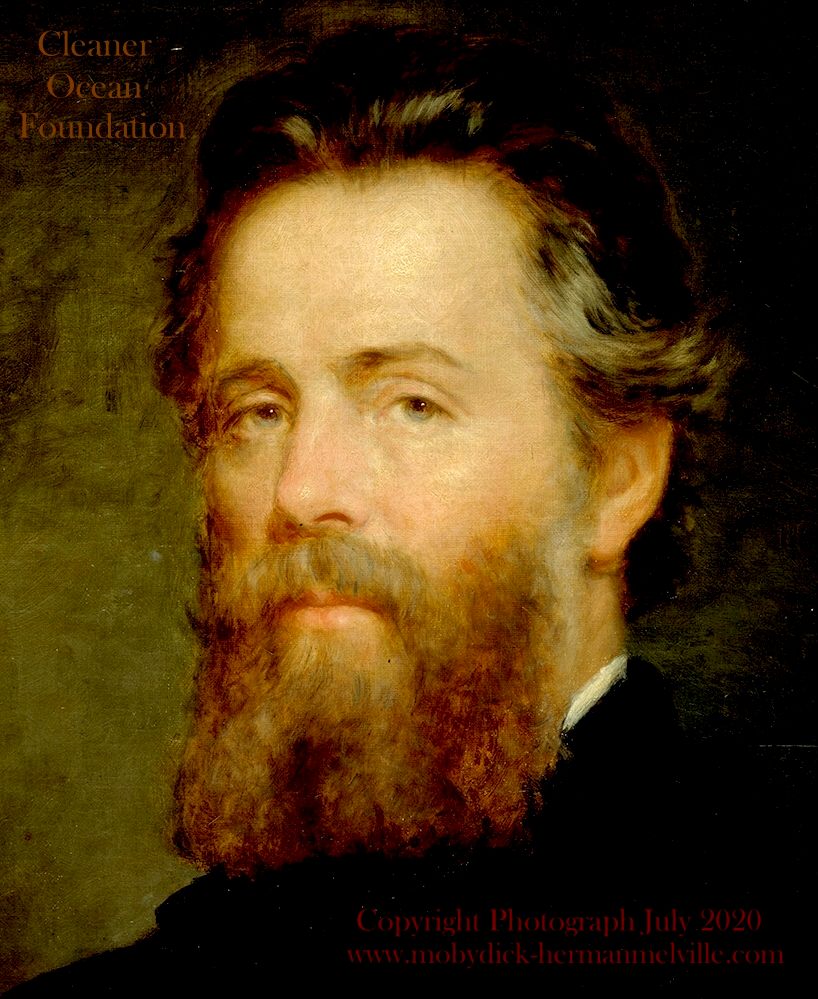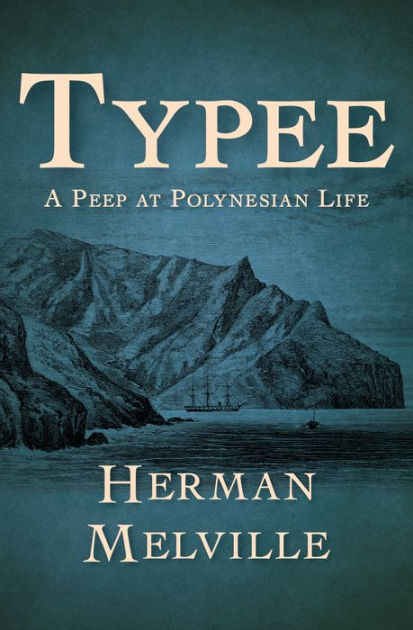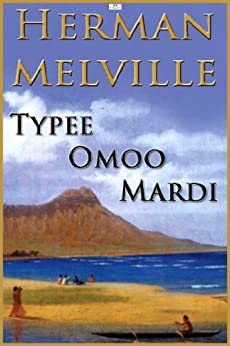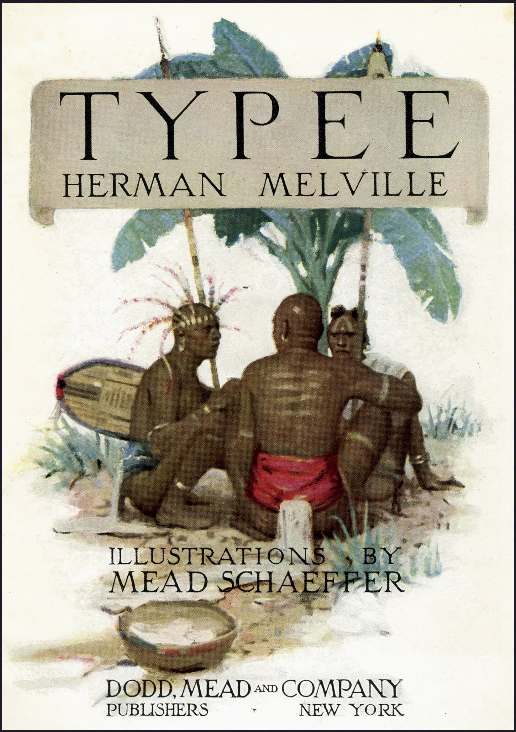
Herman
Melville was the author of a novel abut what we'd now consider an illegal
activity;
the commercial hunting of whales for oil and meat. In capturing the
whaling industry at its peak, showcasing the rebellious white whale, in
our view he was lobbying for the whales, the innocent victims in his
story. Following his death in New York City in 1891, he posthumously came to be regarded as one of the great American writers.
Fortunately for us, Herman was not eaten by cannibals.
Herman Melville was born
in New York City on the 1st of August 1819. He died on the 28th of September 1891. He was an American novelist, short story writer and poet of the American Renaissance period. Among his best-known works are Moby-Dick (1851), Typee (1846), a romanticized account of his experiences in Polynesia, and Billy Budd, Sailor, a posthumously published novella.
The centennial of his birth in 1919 was the starting point of a Melville revival,
when Moby-Dick began to be considered one of the great American novels.
TYPEE
Typee: A Peep at Polynesian Life is the first book by American writer Herman Melville, published first in London, then New York, in 1846. Considered a classic in travel and adventure literature, the narrative is partly based on the author's actual experiences on the island Nuku Hiva in the South Pacific Marquesas Islands in 1842, liberally supplemented with imaginative reconstruction and adaptation of material from other books. The title comes from the valley of Taipivai, once known as Taipi. Typee was Melville's most popular work during his lifetime; it made him notorious as the "man who lived among the
cannibals".
The book presents itself as a piece of travel adventure, but from the beginning there were questions whether the story was true. The London edition of the book appeared in the publisher John Murray's Colonial and Home Library series, accounts of foreigners in exotic places, and the slightly suspicious Murray required reassurance that Melville's experiences was first-hand, not the work of a professional travel writer, and that the author had himself experienced the adventures he described. American readers, however, accepted the story at face value.
Typee is, "in fact, neither literal autobiography nor pure fiction," says scholar Leon Howard. Melville "drew his material from his experiences, from his imagination, and from a variety of travel books when the memory of his experiences were inadequate." He departed from what actually happened in several ways, sometimes by extending factual incidents, sometimes by fabricating them, and sometimes by what one scholar calls "outright lies".
The actual one-month stay on which Typee is based is presented as four months in the narrative; there is no lake on the actual island on which Melville might have canoed with the lovely Fayaway, and the ridge which Melville describes climbing after escaping the ship he may actually have seen in an engraving. He drew extensively on contemporary accounts by Pacific explorers to add to what might otherwise have been a straightforward story of escape, capture, and re-escape. Most American reviewers accepted the story as authentic, though it provoked disbelief among some British readers.
Two years after the novel's publication, many of the events described therein were corroborated by Melville's fellow castaway, Richard Tobias "Toby" Greene.



PUBLICATION
Typee was published first in London by John Murray on February 26, 1846, and then in New York by Wiley and Putnam on March 17, 1846. It was Melville's first book, and made him one of the best-known American authors overnight.
The same version was published in London and New York in the first edition; however, Melville removed critical references to missionaries and Christianity from the second U.S. edition at the request of his American publisher. Later additions included a "Sequel: The Story of Toby" written by Melville, explaining what happened to Toby.
Before Typee's publication in New York, Wiley and Putnam asked Melville to remove one sentence. In a scene where the Dolly is boarded by young women from Nukuheva, Melville originally wrote:
Our ship was now given up to every species of riot and debauchery. Not the feeblest barrier was interposed between the unholy passions of the crew and their unlimited gratification.
The second sentence was removed from the final version.
The inaugural book of the Library of America series, titled Typee, Omoo, Mardi (May 6, 1982), was a volume containing Typee: A Peep at Polynesian Life, its sequel Omoo: A Narrative of Adventures in the South Seas (1847), and Mardi, and a Voyage Thither (1849).
CRITICS
Typee's narrative expresses sympathy for the so-called savage natives, while criticizing the missionaries' attempts to civilize them:
It may be asserted without fear of contradictions that in all the cases of outrages committed by Polynesians, Europeans have at some time or other been the aggressors, and that the cruel and bloodthirsty disposition of some of the islanders is mainly to be ascribed to the influence of such examples.
[The] voluptuous Indian, with every desire supplied, whom Providence has bountifully provided with all the sources of pure and natural enjoyment, and from whom are removed so many of the ills and pains of life—what has he to desire at the hands of Civilization? Will he be the happier? Let the once smiling and populous Hawaiian islands, with their now diseased, starving, and dying natives, answer the question. The missionaries may seek to disguise the matter as they will, but the facts are incontrovertible. CH 4
The narrator states that Typee natives ate an inhabitant of one of the neighboring valleys, but the natives who captured him reassured him that he would not be eaten.
The Knickerbocker called Typee "a piece of Münchhausenism". New York publisher Evert Augustus Duyckinck wrote to Nathaniel Hawthorne that "it is a lively and pleasant book, not over philosophical perhaps." In 1939 Charles Robert Anderson published Melville in the South Seas in which he documented that Melville had spent only one month on the island (rather than the four months he claimed) and that Melville lifted extensive material from travel narratives.
MOBY
DICK - OUR FAVOURITE
Herman
Melville's Moby
Dick, is the story of a great white sperm whale that fought back at
whalers who tried to harpoon him. The idea came to Herman Melville after
he spent time on a commercial whaler, where stories abounded of the
sinking of the Essex in 1821 and Mocha
Dick, a giant sperm whale that sank around 20 ships, before being
harpooned in 1838.
HERMAN'S BOOKS
Typee (1846)
Omoo (1847)
Mardi (1849)
Redburn (1849)
White-Jacket (1850)
Moby Dick (1851)
Pierre (1852)
Israel Potter (1855)
The Confidence-Man (1857)
Billy Budd (1924)
LINKS
& REFERENCE
https://melvillesociety.org/
http://melville.org/
Please use our
A-Z INDEX to
navigate this site



